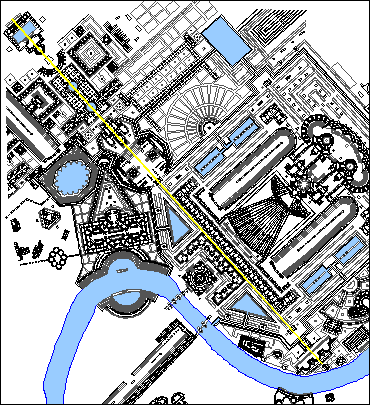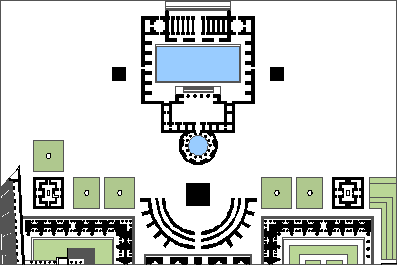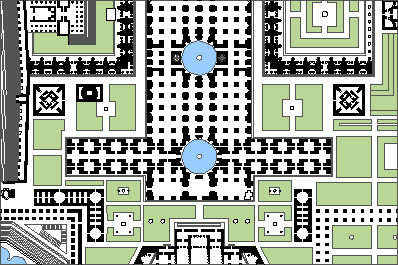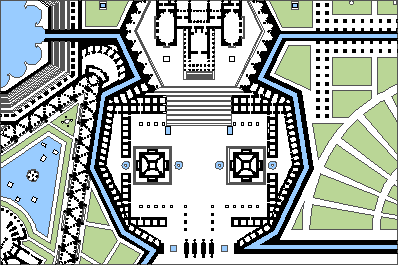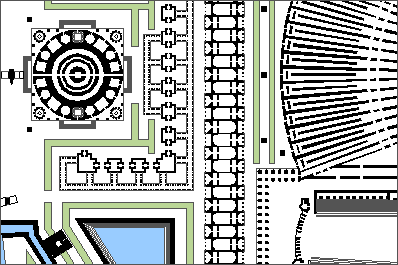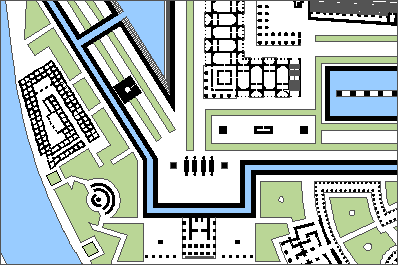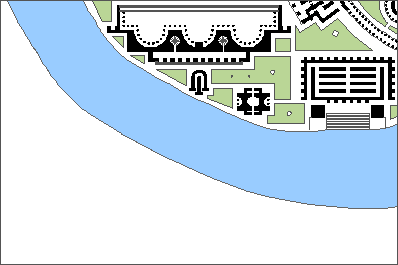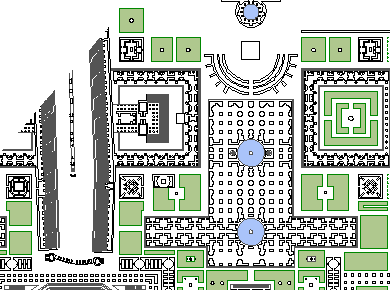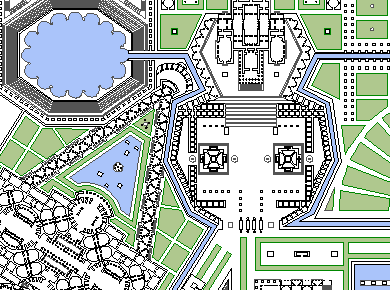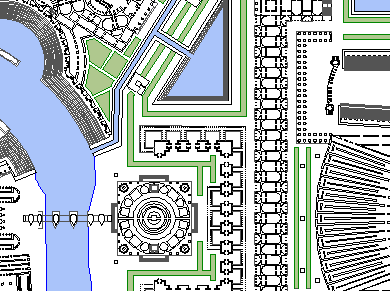Encyclopedia Ichnographica | longest axis | 2/3 |
longest axis |
The Longest Axis / The Axis of Life |
|
The axis begins with the Nympheum of Nero.
|
|
Although there is no textual or archeological evidence for the cruciform Porticus Neronianae, Piranesi is here evoking the original Basilica of St. Peter's constructed adjacent to this site by the Emperor Constantine c. 330 AD. The plan of the Porticus Neronianae mirrors the plan of Old St. Peter's, and is placed just to the right of the Christian basilica's actual location. |
|
Given its phallical plan, the Temple of Mars may well be interpreted as the generative force behind the Campo Marzio's longest axis. Since "campo Marzio" means "the fields of Mars," the placement of a temple honoring Mars in a position of apparent importance is altogether logical. Moreover, Piranesi marks the Templum Martis and its Area Martis forecourt as the place of preparation for the Triumphal Procession. Overall, however, these are symbolic gestures on Piranesi's part because there is no historical evidence for this Temple of Mars, nor that the Triumphal Way ever began at this location. |
|
|
|
Hadrian's Tomb, today known as the Castle Sant Angelo, is the only ancient remain that is within this portion of Piranesi's Campo Marzio. Its formidable presence for over 1800 years no doubt inspired Piranesi's equally impressive grandiose schemes. The tomb's relationship with the long axis, however, is only secondary because the tomb generates its own axis perpendicular to the main axis. The Hardian axis runs through the Bustum Hadriani, which Piranesi situates north of the tomb (to the right in the drawing here). |
|
Piranesi correctly positions the Horti Domitiae, the Gardens of Domitia (aunt of the Emperor Nero) along the banks of the Tiber, just east of Hadrian's tomb. |
|
|
|
1998.05.04 | Campo Marzio: The Longest Axis |
|
The axis begins with the Nymphaeum of Nero.
|
Quondam © 2010.07.17 |
